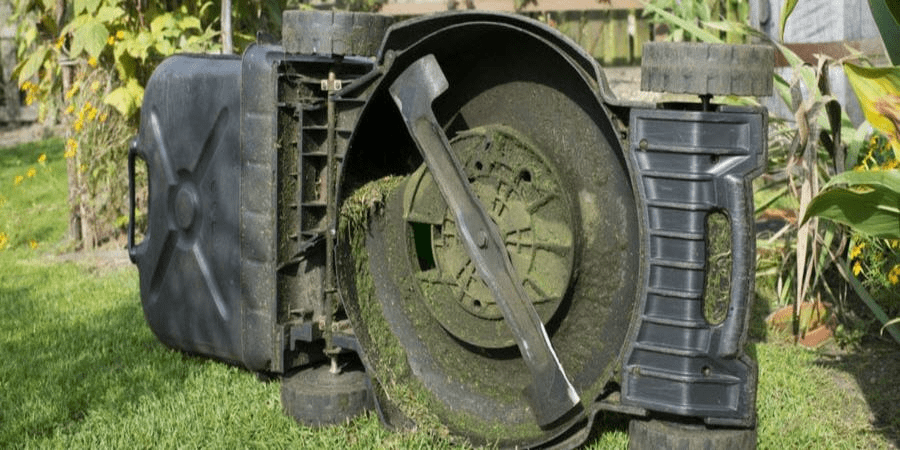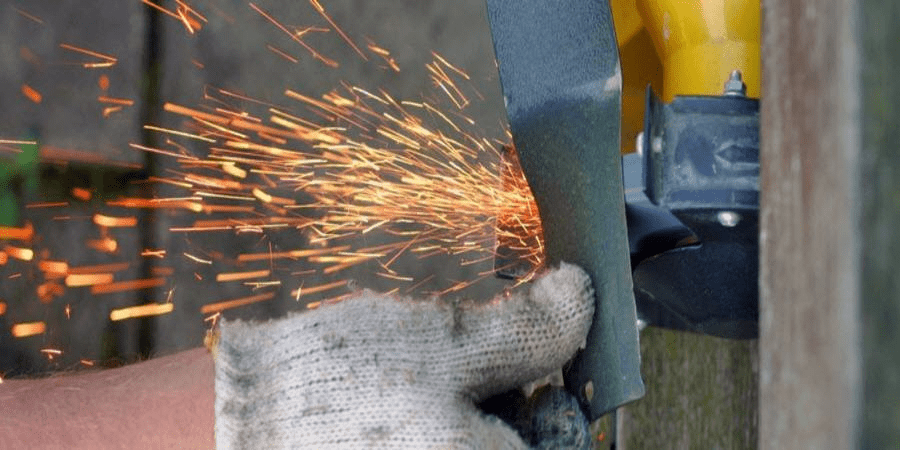Preparing Your Lawn Mower for Winter
- Milorganite AgronomistNovember 4, 2017
The growing season is coming to a close and it’s time to store your lawn mower. Clean and protect them with these helpful tips to keep everything in good working condition and ready for spring. In warmer climates, it might be a good time do the same maintenance as the folks in the frozen tundra.

Prep Your Mower for Winter Storage
Properly winterizing your mower will ensure it’s ready in spring when the grass starts growing again. A little time, effort, and a few bucks might just save you from expensive repairs or replacement later.
Check the Owner’s Manual
Crack open the owner’s manual for your mower for maintenance, winterizing, and storage information before you begin. Can’t find the manual, checkout the manufactures website or ManualsOnline.com, which has thousands of free manuals in many categories. If you encounter conflicting information, always follow the manufacturer’s maintenance instructions.
Gasoline: Tank on Empty or Full with Stabilizer
Don’t store your mower with a partially full tank of fuel. Ethanol in the fuel begins to degrade or stiffen plastic and rubber parts, and attracts moisture, which can cause the tank to rust. It can take as little as 30 days for gasoline to become “stale,” gumming up the fuel system and carburetor. After months, it can thicken into what technicians call “varnish.” Stale gas is the primary suspect when a mower won’t start.
Your first option is to empty the fuel tank. You can either drain it or run the tank dry, whichever is the easier option. You might consider adding a fuel stabilizer or preserver, then run the mower dry.
Some recommend storing mowers with a full take of treated fuel. For this method, add the fuel stabilizer, fill the tank, run the mower for a few minutes to circulate it through the engine, then top off the tank with more fuel. This can keep gasoline fresh for months. Regardless of the method you choose, always follow product directions and manufacturer’s recommendations.
Change the Oil
Four-stroke engines require an oil change, especially if the oil is old, contaminated, or dark black. Consult the owner’s manual for directions, the type of oil to use, and the proper amount. Never pour used oil down the drain or sewer to prevent contaminating waterways! Many municipalities have recycling centers and auto repair shops may dispose of the oil for you, possibly for a small fee. Two-stroke engines don’t require an oil change, since oil is mixed with the gas.
Clean the Deck
Grass easily builds up under mower decks. Before you begin cleaning, play it safe and remove the sparkplug. Follow the manufacturer’s directions regarding tipping your mower to access the underside of the deck.
A good cleaning will help prevent corrosion. Use a putty knife or wire brush to scrape away caked-on clippings and dirt. Wipe off any remaining residue. Many newer mowers have washout ports to simplify cleaning the mower deck and help eliminate grass clippings from accumulating. Spray the clean, dry deck with silicone spray to help prevent future build-up.

Spark Plugs
Spark plugs are designed to be used for about 100 hours of mowing and should only need to be replaced every other year. Remove and check the spark plug and replace it if it’s corroded. Coat the threads with anti-seize compound and it’ll come out more easily next time. New sparkplugs improve startup and performance and they’re inexpensive. It’s so easy, why not change it annually? Remove the sparkplug until spring.
Air Filters
A clogged air filter can be one of the main culprits if you have problems starting your mower in spring. A clean filter provides steady air flow to help the engine burn gas more efficiently. If it’s a paper filter, replace it. If it’s an oil-soaked sponge filter, wash it with soap and water, allow it to thoroughly air dry, add a bit of clean oil, and reinstall it. Check the cooling fins and remove any dirt while you’re at it.
Sharpen the Blade
Your mower’s blade has had a tough season cutting the lawn. It’s also survived the adversity of stones, rocks, roots, branches, and all the stuff that lurks in lawns waiting for an unsuspecting mower. Dull blades tear and damage blades of grass making them more prone to disease and desiccation—drying out. In an ideal world, the blade should be sharpened 2–3 times a year. If you haven’t kept up, at least do it before winter.
Wear work gloves and follow manufacturer instructions for removing the blade. DIY sharpening is only recommended if you’ve had some experience. Otherwise, take the blades to a mower repair shop and for a few bucks, let the professionals take care of it. If you’re taking your mower in for a tune-up, blade sharpening is likely included. Finish up by lightly coating the blades with a light oil or spray of multipurpose lubricant to prevent rusting.

Recharge the Battery
If your mower has a battery, remove it and give it a full charge. Reinstall the battery in spring.
The easiest tune up
If you’re not a DIY person, take your mower to a repair shop for maintenance. Let the professionals handle it.
Storage
Disconnect the battery and sparkplug. Store your mower in a dry, protected place such as your garage or shed. If you’re storing it on a concrete floor, put plastic underneath to prevent moisture from rusting the deck. Never store it next to a furnace, water heater, or appliance with a pilot light.
Preparing your lawn mower for a winter rest will lengthen it's usefulness. It will be sharp, clean, and well maintained when your lawn awakes in spring, and you’re ready to get outside again!

